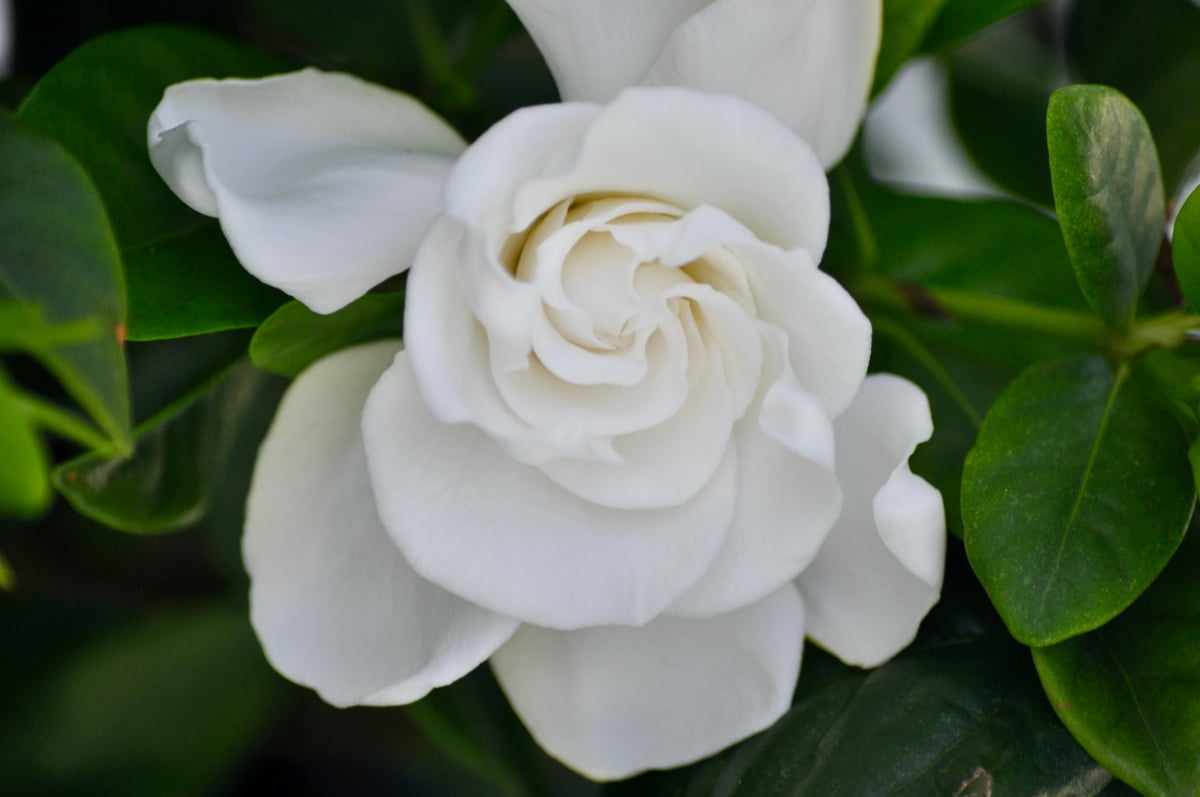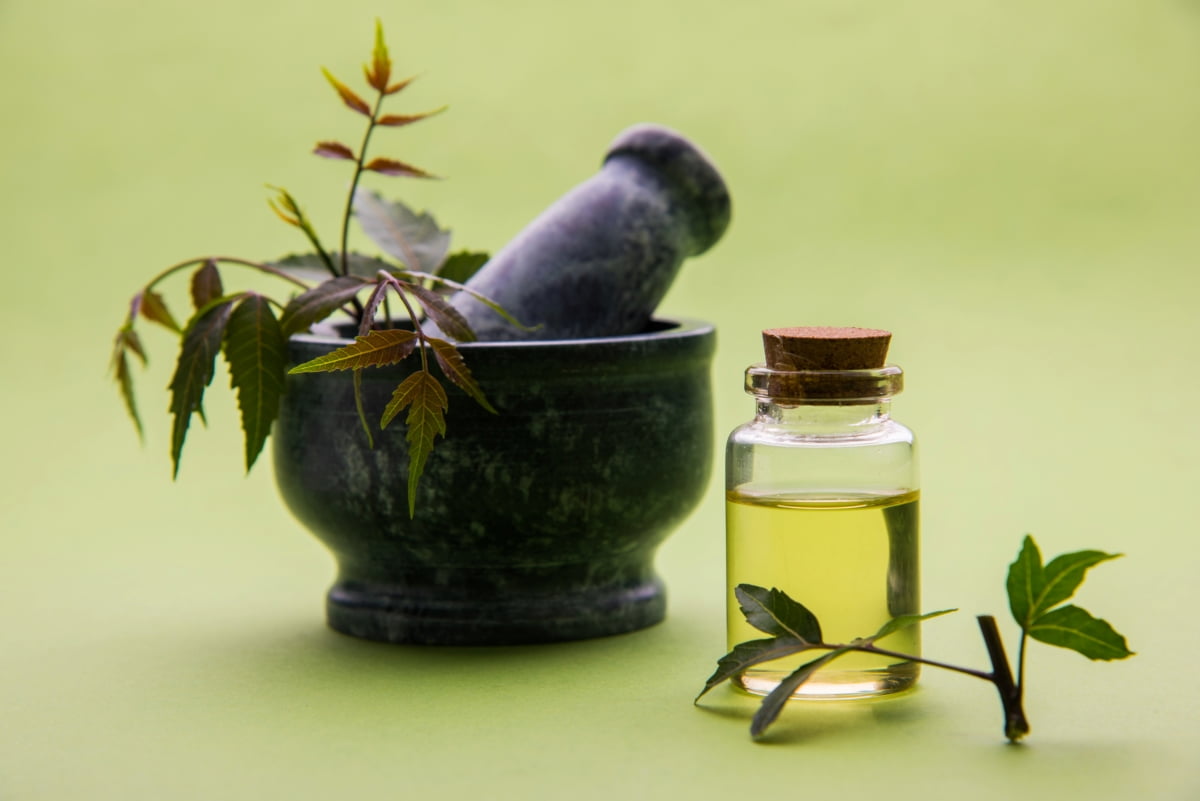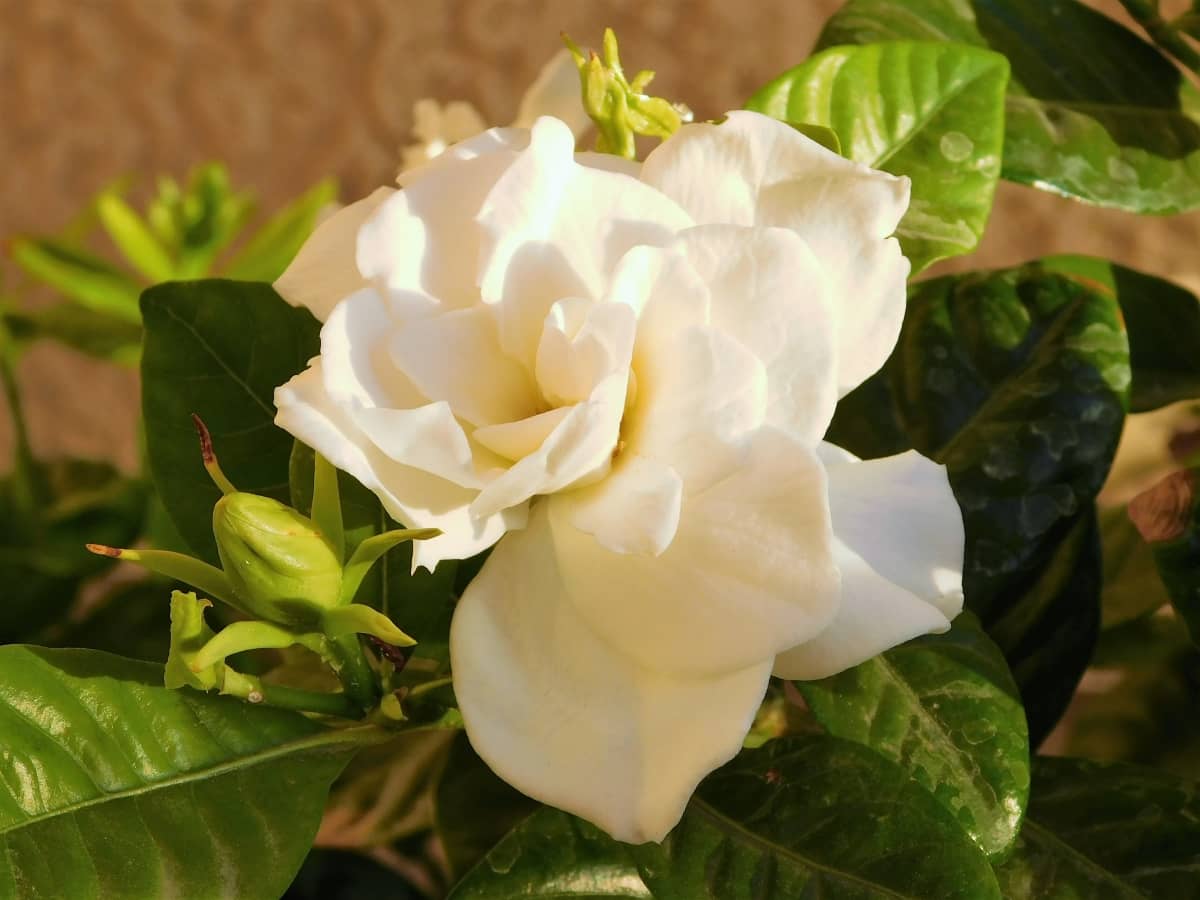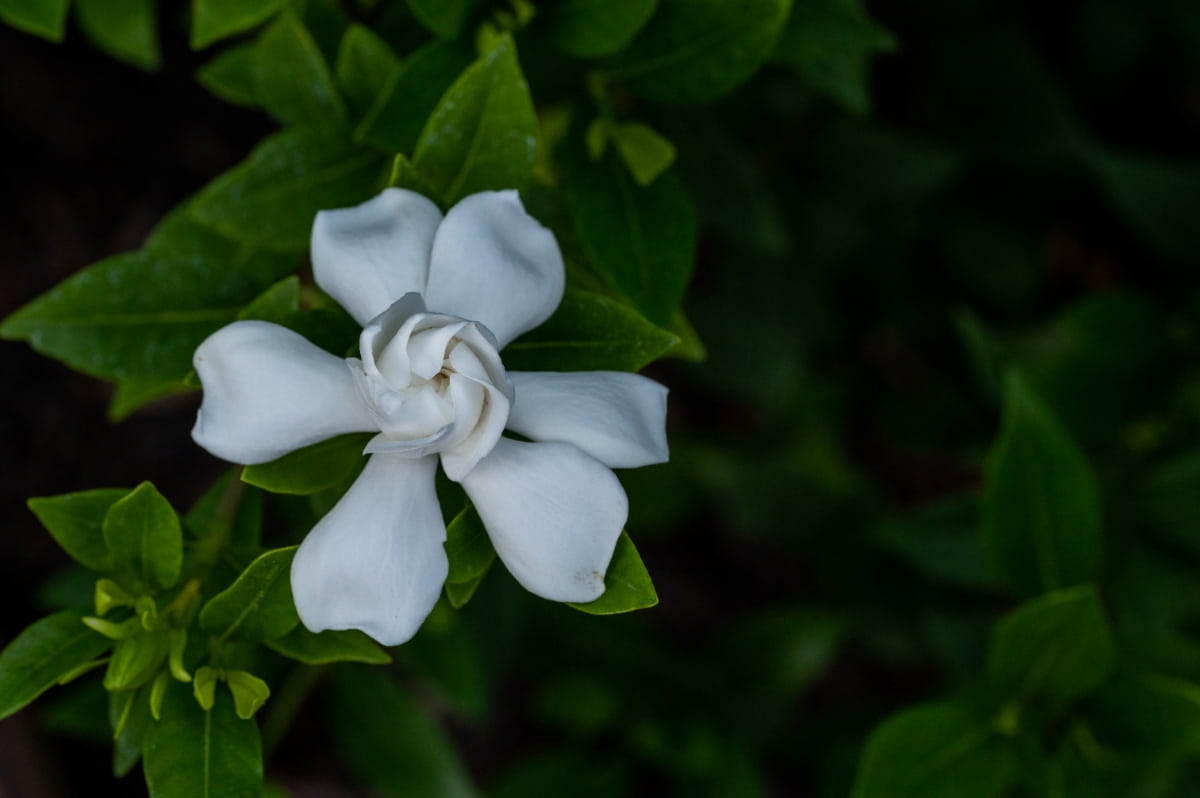Garden enthusiasts love gardenia plants for their nice-smelling flowers and green leaves, but they can get bugs and illnesses. Neem oil offers a natural, effective solution to these problems, providing both pest control and disease prevention.

How to Use Neem Oil on Gardenia Plants
Neem Oil and Its Benefits for Gardenia Plants
Neem oil is a natural, effective solution for keeping gardenia plants healthy and free from pests. It’s particularly useful for gardenia plants, as it acts as a natural insecticide, repelling a wide range of pests that can harm these beautiful shrubs. Neem oil is great for keeping pests away because it messes up the whole insect life cycle, from when they’re eggs and babies to when they’re grown-ups.
Additionally, neem oil is a great fungicide, helping prevent common fungal diseases that can affect gardenia plants. Using neem oil on plants, especially gardenias enhances their growth and maintains their lush appearance without the use of harsh chemicals.
How to Prepare Neem Oil to Use on Gardenia Plants
Preparing neem oil for use on gardenia plants is a straightforward process. To start, you need to know how to mix neem oil for plants. The basic formula involves mixing a specific quantity of neem oil with water and a mild detergent, which acts as an emulsifier. The amount of neem oil you use in one liter of water depends on how strong the oil is and how bad the pest issue is.
A usual suggestion is to blend 5 ml of neem oil with 1 liter of water. This creates a solution that can be easily sprayed on the gardenia plants. When mixing, ensure that the oil is thoroughly blended with the water to form a stable emulsion. This preparation is essential for effective application, ensuring that the oil spreads evenly over the plant surfaces.
How to Apply Neem Oil on Gardenia Plants
Applying neem oil on gardenia plants requires careful attention to ensure thorough coverage without harming the plant. Do you spray neem oil on soil or leaves? The answer is both, but primarily on the leaves, as this is where most pests reside. When applying, focus on the undersides of the leaves, where pests and eggs are more likely to be found. To use neem oil indoors on your plants, be careful.
Use a spray bottle or garden sprayer for an even spread, but make sure to protect nearby surfaces and have good ventilation. It’s best to apply neem oil during cooler parts of the day, such as early morning or late afternoon, to avoid leaf burn. Regular application, typically every couple of weeks, is necessary to maintain its effectiveness in pest control.
Mixing and Dilution for the Right Concentration of Neem Oil for Gardenia Plants
Getting the right concentration of neem oil is crucial for effective pest control without damaging the gardenia plants. The neem oil dosage per liter of water is important to follow precisely. Usually, it’s suggested to use 5 to 10 milliliters of neem oil for every liter of water, which is a 0.5% to 1% solution.
In case you missed it: How to Grow and Care for Gardenia Bonsai: Planting, Pruning, and Repotting

Diluting the oil correctly ensures that it is strong enough to kill pests but not so strong that it harms the plant. Over-concentration can lead to leaf burn or damage to the plant. It’s also important to add a few drops of mild detergent or soap to the mixture, as this helps emulsify the oil, making it blend well with water for an even application.
Can Neem Oil Be Used on All Gardenia Plant Varieties?
While neem oil is generally safe for gardenia plants, it’s important to consider the different varieties and their specific sensitivities. Not all gardenia plant varieties may react the same way to neem oil treatments. It is advisable to conduct a patch test on a limited area of the plant prior to widespread application.
This helps in identifying any adverse reactions. Additionally, be aware of what plants not to use neem oil on, as some plants can be particularly sensitive to oil-based treatments. Always research or consult with a gardening expert if unsure about the suitability of neem oil for a specific garden variety or any other plant in your garden.
How Long Does Neem Oil Stay Effective on Gardenia Plants?
Typically, neem oil remains active for about one to two weeks after application. This duration can be influenced by environmental conditions such as rain, sunlight, and temperature. Rain, in particular, can wash away the oil, necessitating a reapplication. For continuous protection, it’s advisable to reapply neem oil every two weeks or after heavy rainfall. Consistent application not only controls current infestations but also helps in preventing future pest problems. Monitoring the plants after application is key to determining how often you need to reapply the neem oil.
Using Neem Oil in Combination with Other Pest Control Methods
Neem oil can be part of an integrated pest management strategy for gardenia plants. While it’s effective on its own, combining neem oil with other pest control methods can enhance overall protection. For instance, physical pest removal, such as picking off large pests or infested leaves, can be done alongside neem oil application for more immediate control.
In case you missed it: How to Grow Gardenias/white Peony in Greenhouse: A Step-By-Step Guide for Seed to Harvest

Additionally, encouraging beneficial insects that prey on harmful pests can complement the use of neem oil. It’s also important to maintain healthy plants through proper watering, fertilization, and pruning, as healthy plants are more resistant to pest infestations. When using multiple methods, ensure they are compatible and not counterproductive to each other’s effects.
Some Common Pests and Diseases that Neem Oil Can Control on Gardenia Plants
Neem oil is a potent solution for combating a range of pests and diseases commonly found on gardenia plants. It is particularly effective against aphids, spider mites, mealybugs, and whiteflies, all of which can cause substantial harm by extracting sap from the leaves. Neem oil’s insecticidal properties interfere with the life cycle and feeding habits of these pests, effectively reducing their population over time.
In terms of diseases, neem oil uses for plants include acting as a fungicide and controlling common fungal issues like powdery mildew and leaf spots. These diseases often manifest as discolored patches or powdery deposits on the leaves, and regular application of neem oil can help prevent their occurrence. By targeting both pests and diseases, neem oil serves as a comprehensive solution for maintaining the health and beauty of gardenia plants.
How to Monitor the Effectiveness of Neem Oil on Gardenia Plants
Regular observation is key to monitoring the effectiveness of neem oil on gardenia plants. Start by closely inspecting the plants before and after each application. Look for signs of pest activity, such as the presence of insects, eggs, or damage to the leaves. Keep track of any changes in the number of pests or the extent of damage over time. Also, observe for signs of disease, like spots or mildew, and note any reduction in these symptoms.
Photographs can be helpful for comparing the condition of the plants over time. Additionally, monitor the overall health of the gardenias, including leaf color, flowering, and growth patterns. Improved plant vigor and reduced pest and disease symptoms are good indicators of neem oil’s effectiveness. It’s also important to note any adverse reactions, which could suggest over-application or sensitivity of the plant to neem oil.
Safety Precautions to Take when Using Neem Oil on Gardenia Plants
When using neem oil on gardenia plants, it’s important to take certain safety precautions to ensure effective and safe application. Ensure you wear appropriate protective gear, including gloves and long-sleeved clothing, to prevent skin contact with neem oil. While neem oil is natural, it may irritate some individuals. Additionally, use goggles or protective eyewear to shield your eyes from potential splashes.
In case you missed it: How to Use Neem Oil on Peonies: Best Natural Way to Get Rid of Pests on Peonies

When preparing and applying the neem oil mixture, do it in a well-ventilated area, especially when treating indoor plants, to avoid inhaling any spray. Read and follow the instructions for dilution and application carefully, as improper use can harm the plants. Finally, store neem oil and its mixture securely and away from food and water sources to prevent accidental ingestion or contamination. By following these safety measures, you can use neem oil effectively while minimizing risks to yourself and the environment.
Conclusion
Using neem oil on gardenia plants is a safe, natural, and effective way to protect these beautiful shrubs from pests and diseases. By understanding the proper preparation, application, and safety precautions, gardeners can enjoy healthy, thriving gardenia plants with the help of this versatile organic remedy.
- Ultimate Guide to Ossabaw Island Hog: Breeding, Raising, Diet, and Care
- Ultimate Guide to Juliana Pig: Raising Facts, Size, Diet, Care, and Lifespan
- Raising Lleyn Sheep: Disadvantages, Price, Uses, Characteristics, and Care
- Ultimate Guide to Meishan Pig: Breed Facts, Breeding, Raising, and Care
- Ultimate Guide to Teacup Pigs: Raising, Diet, Lifespan, Cost, and Care
- Guide to Raising Poll Dorset Sheep: Facts, Profile, Characteristics, Uses, and Care
- Ultimate Guide to Bighorn Sheep: Characteristics, Diet, Lifespan, Breeding, and Lifecycle
- Ultimate Guide to Raising Katahdin Sheep: Farming Facts, Breed Profile, Uses, and Care
- Ultimate Guide to Raising Oreo Cows: Belted Galloways Farming Facts, Profile, Uses, and Care